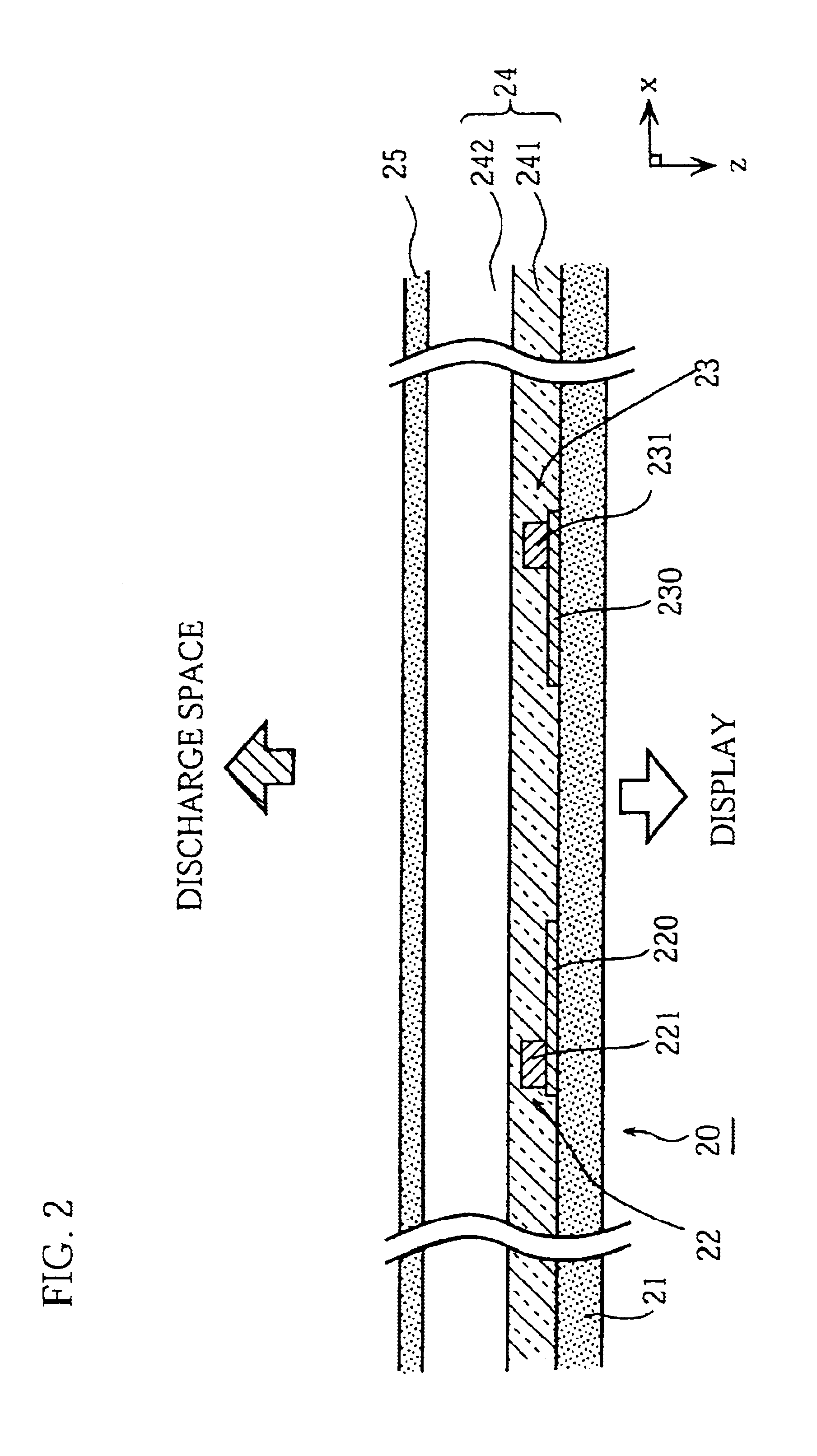Plasma display panel
a display panel and plasma technology, applied in the direction of gas discharge vessels/containers, gas-filled discharge tubes, solid cathodes, etc., can solve the problems of colloidal particles affecting the display performance, reducing the amount of light to be obtained, and unsatisfactory color of the discharge space, so as to enhance the display performance reduce the power consumption of the plasma display panel, and enhance the dielectric layer excellent transparency
- Summary
- Abstract
- Description
- Claims
- Application Information
AI Technical Summary
Benefits of technology
Problems solved by technology
Method used
Image
Examples
embodiment 1
1. Embodiment 1
1-1. Entire Construction of PDP
[0041]FIG. 1 is a perspective, sectional view showing main components of the AC surface-discharge type plasma display panel (hereinafter called PDP) in Embodiment 1. In the drawing, the z direction is a direction along thickness of the PDP and the xy plane is parallel to the panel surface of the PDP. Though the size of the PDP in the present embodiment conforms to the VGA specifications for 42-inch class, the present invention can be applied to other sizes as well.
[0042]As shown in FIG. 1, the PDP is roughly divided into the front panel 20 and the back panel 26 which are disposed so that their main surfaces face each other.
[0043]On one surface of the front panel glass 21, which is the substrate of the front panel 20, a plurality of pairs of display electrodes 22 and 23 (an X electrode 23 and a Y electrode 22) are disposed in the x direction, where the y direction is the direction of the length, and each pair of display electrodes 22 and ...
embodiment 2
2. Embodiment 2
[0064]The PDP in Embodiment 2 will be described. The construction of Embodiment 2 is almost the same as Embodiment 1 except for the dielectric layer.
2.1 Construction of Dielectric Layer and Surroundings
[0065]FIG. 2 is a partial sectional view of the PDP showing a detailed construction of the dielectric layer 24 in Embodiment 2 and the surroundings. As shown in FIG. 2, the dielectric layer 24 in Embodiment 2 has a two-layered construction in which the second dielectric layer 242 is laid on the first dielectric layer 241.
[0066]The first dielectric layer 241 is composed of a 5μm-thick PbO-base glass (which is composed of, in this example, 65 wt % of PbO, 10 wt % of B2O3, 24 wt % of SiO3, 1 wt % of CaO, and 2 wt % of Al2O3), and is formed on the main surface of the front panel glass 21 covering the display electrodes 22 and 23.
[0067]The second dielectric layer 242 is composed of a 25 μm-thick ZnO—P2O5-base glass (which is composed of, in this example, 30 wt % of ZnO, 20 w...
PUM
| Property | Measurement | Unit |
|---|---|---|
| Thickness | aaaaa | aaaaa |
| Temperature | aaaaa | aaaaa |
| Temperature | aaaaa | aaaaa |
Abstract
Description
Claims
Application Information
 Login to View More
Login to View More - R&D
- Intellectual Property
- Life Sciences
- Materials
- Tech Scout
- Unparalleled Data Quality
- Higher Quality Content
- 60% Fewer Hallucinations
Browse by: Latest US Patents, China's latest patents, Technical Efficacy Thesaurus, Application Domain, Technology Topic, Popular Technical Reports.
© 2025 PatSnap. All rights reserved.Legal|Privacy policy|Modern Slavery Act Transparency Statement|Sitemap|About US| Contact US: help@patsnap.com



